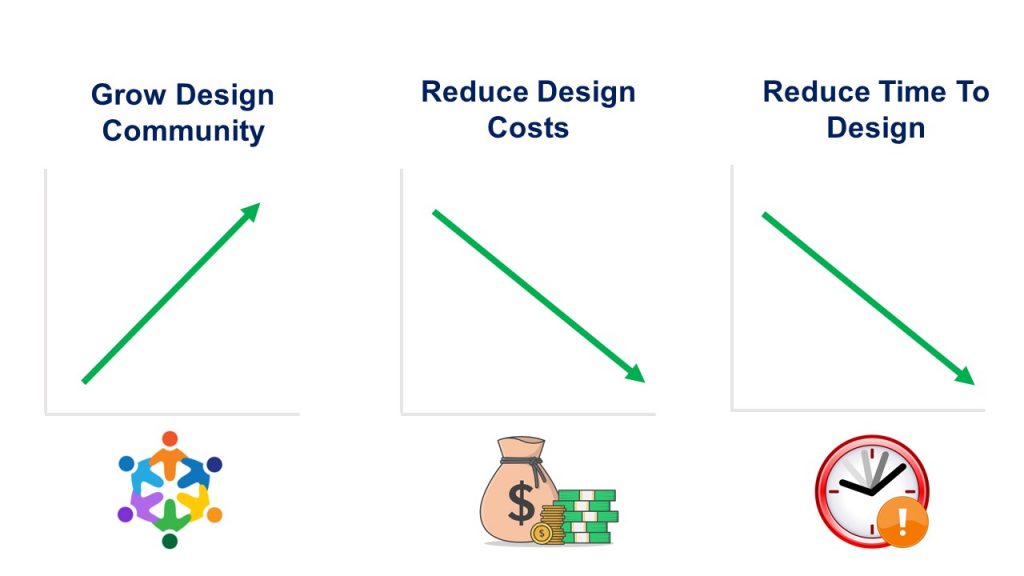LUCIO LANZA, Managing Partner, Lanza techVentures
MIKE WISHART, CEO, and MOHAMED KASSEM, CTO, Efabless
The pandemic, among a host of other challenges, affected the global semiconductor supply chain and created a semiconductor shortage just as consumer demand for electronic devices exploded. Shipments of cars and everyday electronics ground to a halt, often for want of a single, sub-$1 chip. Chips were front page news … and for all bad reasons!
Naturally, the focus among the industry, its customers and the public was on the supply of chips and on increasing fab capacity and removing supply chain bottlenecks. What was largely missed was the need to position the industry to address a powerful long-term trend toward customized, special-purpose chips and the need to increase design capacity.
This is a secular trend and the cure involves addressing three pillars to the solution:
- Expand the designer community
- Reduce the time to design
- Reduce the cost of design
This cannot be done in an incremental way using traditional methods because the barriers are too high. Instead, open source and community are critical to making this happen.
Open source silicon began many decades ago with the advent of open-source EDA tools was kept alive and advanced by a small, enthusiastic cadre of talented professional and academics. It wasn’t until recently when (i) open source was applied to the entire stack of chip design and manufacturing, (ii) a simple, scalable, streamlined, cost-effective path was created and (iii) subsidized programs were launched to engage a larger global community of potential designers and chip users, that the value of this new form of ecosystem could be realized.

The numbers of designers and designs are now growing (FIGURE 1). Open-source and community are applied to software-style fast, simple and affordable design of chips that are “good enough” to:
- Serve the need for custom solutions for new markets such as IoT, machine learning and automotive
- Prototype novel designs for novel applications
- Educate a new community to address these needs
Software and hardware developers are now empowered to design chips and chip design has become easier and more interesting to learn. This revolution will also bear fruit for the traditional ecosystem as the explosion of designs will applicability to new markets.
Call it the democratization of chip design.
Click here to read the full article in Semiconductor Digest magazine.



